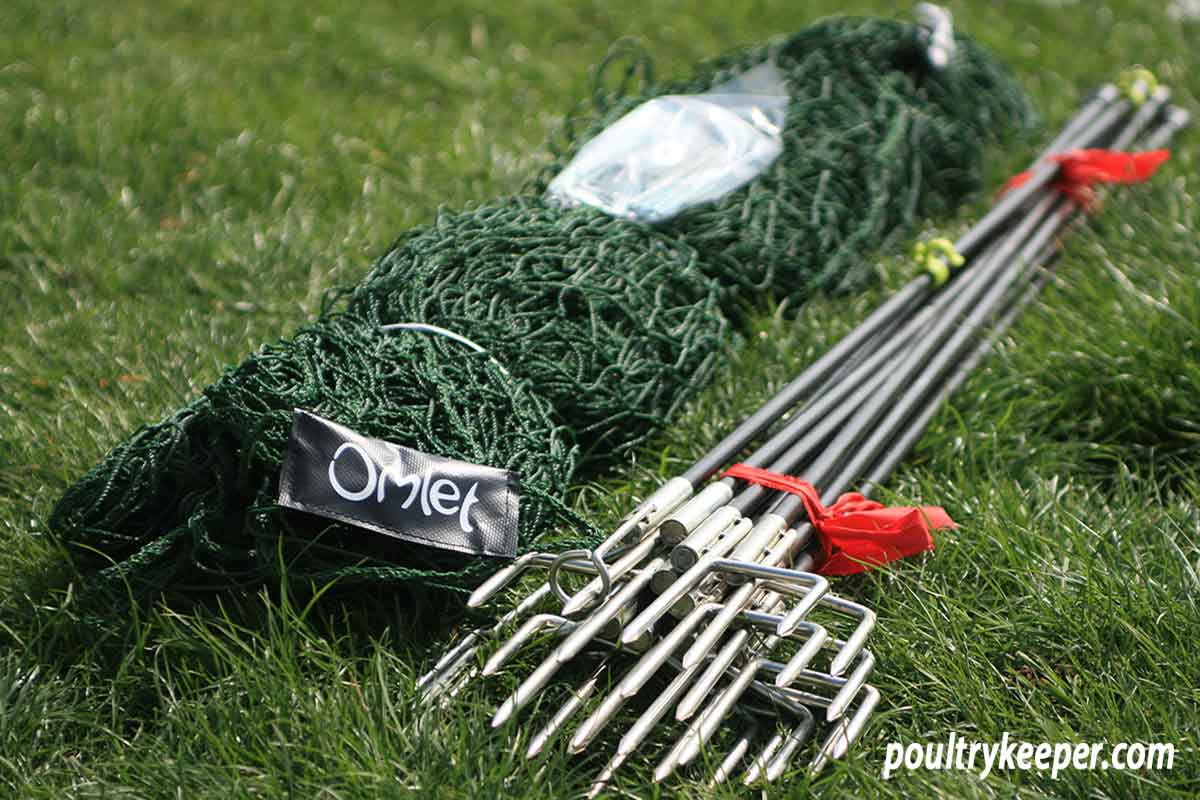
Equipment
Focus
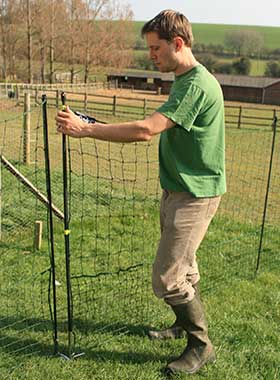
In this Equipment Focus, I look at Omlet chicken netting that is a portable solution that can be used to keep your chickens inside an area to free-range or to keep them out of an area of your garden like the vegetable patch!
Most of us have a fixed run for our chickens, and –most– of the time, it’s a little smaller than we would like, or it’s a little overstocked for the ground we have. Chickens scratch as they forage, and most grass runs will become muddy in a month or so, even in the warmer months when the grass is growing.
It’s all very well having your birds secured in a predator-proof run, but if they don’t have grass to graze or areas to forage, they are missing out.
If you let your hens out into your garden, you can see just how much they love foraging. But this comes at a cost… soil gets scratched onto paths, plants get pecked and scratched up, bowls of dirt appear where hens bathe in their dust baths, not to mention the ‘little packages’ they leave behind; which are spread far and wide!
More often than not, we want to keep our chickens in a certain area or maybe ‘off’ a certain area, such as a vegetable patch or planted area. Until now, the choices have been limited and would often involve a big job. Fencing isn’t easy to move if you want to give your chickens fresh pasture, that is, unless you have an easy to move chicken netting system like this one sold by Omlet!
In this test, I used the Omlet chicken netting to keep 3 hens in a portable run, but there are several other potential uses for this netting…
The Omlet chicken netting kit
The Omlet chicken netting kit comes in 3 different sizes 12, 21 and 42 meters long. I tried the 21-meter long version and built a square run with 5.25-meter sides, which gave a grazing area of 27.5M2 which would be more than adequate for most small flocks.
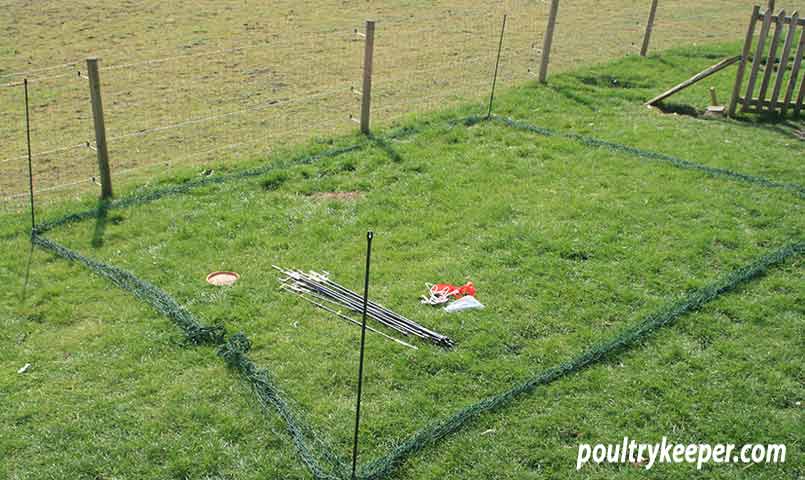
Note:
Area: If you make a square run out of the netting with 5M sides, it provides your chickens with a grazing area of 5M x 5M = 25M2
Unpacking the kit, I inspected it and was very pleased to see the netting and poles’ height. Most poultry netting I have seen (designed to be electrified) has been waist height, and whilst fox proof (as Mr Fox investigates the fence before leaping and gets a shock) doesn’t stop flighty chickens from clearing it with ease if they get startled.
Netting
The Omlet chicken netting is made of Polyurethane, so it will not rot. The colour (green) blends into the background, as I discovered when trying to take photographs of it!
At 1.25M / chest height, it is perfect for keeping all but the most flighty of chickens where you want them.
The netting has 10cm squares, and the lower section (up to knee height) has 5cm squares for added security at lower levels.
Poles
There are 16 poles. These look like something you could use to spear fish with on a Caribbean island!
On the top, there is a slot with a twist in it so that the netting turns through 90 degrees and it holds the netting securely.
The poles’ bottom has a pair of spikes that are hooked onto the bottom of the netting to hold it down and then can be pushed into the ground easily using a boot.
There is an adequate number of poles, and I found as a rough guide, these can be spaced about a pole’s length apart.
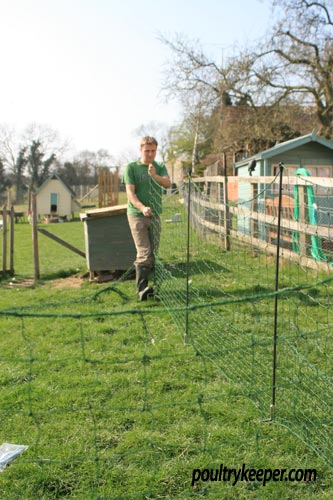
Pegs
A pack of 28 pegs is provided to secure the bottom of the netting, but I would say that once the netting has hung for a day or two and your chickens have settled inside. Assuming the ground is level, you shouldn’t need to put too many of these around the bottom.
The netting comes with an in-built gate. The gate has a metal loop that drops onto a base plate to secure its bottom. Further up the gate, there are plastic clips that secure the middle and upper part. It only takes a few seconds to get through.
Ease of use
I set the Omlet chicken netting up for the first time in 30 minutes; however, at least half of this time was spent taking photographs of it for this review. I would estimate it should take no more than 15 minutes to set up normally and 10 minutes or less to move.
I read the reviews on the Omlet product page and noticed someone said it was a two-person job to set up. I didn’t think so… I did it on my own, although I would say moving it would be easier with two people if you don’t want to take it apart. One person could hold the poles and netting whilst the other pushes a pole into the ground.
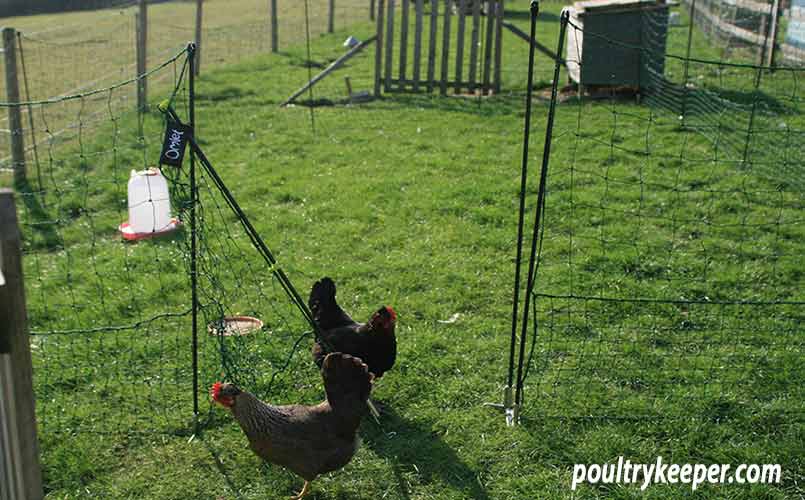
After reaching the end of the netting and having a little spare, I would suggest you start with the gate and work backwards from there so that the size of the run can be adjusted to suit the available length of netting.
Chicken Netting is available from Omlet and at the time of writing costs £99.
Photos
Quick Tip
Click on an image to enlarge them with a description underneath!
Conclusions
I was impressed with the design of the netting. Obviously, this had been well thought out and presented a fast solution to several chicken fencing problems.
There are many uses I came up with for the Omlet chicken netting:
- Keeping chickens off a vegetable patch or planted area.
- To keep chickens inside an area. With the advantage of being able to move them.
- To provide a separate area within a run to introduce new birds to the flock.
- To fence off muddy areas that need a rest for grass to recover.
There are, of course, more uses for this sort of chicken netting, I’m sure but do keep in mind:
- If you have a fox problem, it is not electrified... (although an electric version is available).
And finally...
Don’t forget, chickens need to get out of the sun and require shelter when it’s wet. They also require access to their nest boxes to lay eggs, so keep this in mind when using the netting.
Overall, I was very impressed with the Omlet chicken netting. It has been very well designed and is well priced. It provides some fencing solutions for the poultry keeper and can be put up quickly.
You can see more information, or buy this netting by visiting this omlet page.






